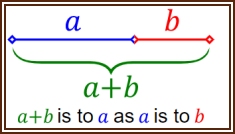When framing art or documents, which have been painted, drawn or printed onto paper, it is usual for the piece to be displayed behind a window mount.
The window mount is a paper-based board that sits between the glass and the artwork. It protects the artwork from damage and helps enhance the visual appeal.

There are no fixed guidelines for the mount border widths or proportions to the window aperture. What constitutes good proportions is a personal perception.
Choice of mount border widths can be governed by a number of factors. Where the picture is going to hang is an important consideration. The subject of the art, and the style of the frame will also affect the amount of visual isolation and "breathing space" the mount can best provide.
As a professional picture framer I am often asked what width the mount border should be. While I explain it is a personal choice that may be influenced by various elements, I find it useful to have a formula, as a starting point towards finding the right visual balance. When seeking a formula for good design and proportions in a visual composition, the Golden Ratio is often considered an aesthetic ideal.
Click here for the Golden Ratio Calculator Page. Enter your pictures dimensions, and find the ideal window mount border widths!
In mathematics, two quantities are in the golden ratio if their ratio is the same as the ratio of their sum to the larger of the two quantities. The figure on the right illustrates the geometric relationship.

Mathematicians since Euclid and Pythagoras in ancient Greece have studied the properties of the golden ratio. The golden ratio often appears in patterns in nature. Throughout history artists and architects have proportioned their works to approximate the golden ratio especially in the form of the golden rectangle, in which the ratio of the longer side to the shorter is the golden ratio, believing this proportion to be aesthetically pleasing. The Golden Rectangle can be a useful guide to good proportions in picture framing.